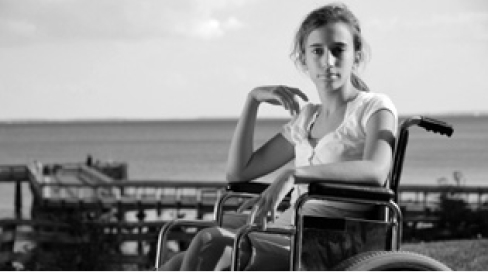A Screening Tool for Disability-Inclusive Grantmaking
Introduction
Disability consciousness starts with an acknowledgment that disability is a universal part of human experience and that having a disability is a valid way of life that can be both rich and complex. From this foundation, we can understand that society plays a critical role in defining disability and determining its consequences. We can recognize the growing minority-group identity of people with disabilities who, like members of other minority groups, assert that systemic social barriers – such as employment discrimination, social and economic devaluation and blocked access to the mainstream – are far more troubling than individual biological differences.
Is the program supportive of the participation of people with disabilities?
- Do recruitment, training and organizational materials depict people with disabilities as equal citizens and leaders? Or do the images reinforce stereotypes? For example, are people with disabilities portrayed as recipients of help while the helpers are people without disabilities?
- Is the language used respectful, humanizing and nondiscriminatory? (e.g., say “person with multiple sclerosis,” not ‘victim of multiple sclerosis.”
- Are people with disabilities invited to participate at all levels of the program, including project conceptualization, decision-making and leadership? Are people with disabilities welcomed to speak on their own behalf and that of their community?
- Does the program anticipate and provide reasonable accommodation, alternative communication formats (Braille, large-print, sign language interpreters, etc.), environmental access, transportation access, programmatic access and economic access?
- Do program organizers demonstrate a commitment to welcome people with a broad spectrum of disabilities – including learning, sensory, cognitive, emotional, physical and environmental/chemical?
What is the internal attitude of the organization toward people with disabilities?
- Are people with disabilities adequately represented in staff and board leadership positions? Are there mechanisms to recruit, train and apprentice people with disabilities for such positions? Are staff members with disabilities offered opportunities for development and advancement?
- Are staff and consultants with disabilities paid adequately for their work? Are their credentials and expertise acknowledged? Is their work praised in proportion to their contribution — no more, no less?
- Whenever possible and appropriate, do nondisabled staff and board members defer to their colleagues who have disabilities when asked to represent or make decisions about the needs of people with disabilities?
- Do both the allocation of resources and decisions about programs reflect the priorities and concerns of people with disabilities?
How is the organization informed by an awareness of the social, political and cultural aspects of disability?
- Do both program content and staff approaches reflect an understanding of the barriers faced by people with disabilities and their history of social and economic discrimination?
- Do programs, policies and staff approaches reflect an understanding of the disability experience that transcends the older “medical model” which emphasizes cure and “normalization”? Is there an acknowledgment of people with disabilities as members of a minority community with lifestyles and values that may diverge in interesting and instructive ways from the majority culture?
- Are programs responsive to the multicultural identity of much of the disability community? Is attention focused on the additional issues of gender, age, race, ethnic, class and sexual orientation of people with disabilities involved with the organization and its programs?
- Does the organization foster links between disability groups and organizations representing other minority communities?
Are the organization’s programs set up to respond to critical social, political and economic issues affecting people with disabilities?
- Are staff and board familiar with disability rights issues, including those of particular disability subgroups? Have relationships been cultivated between the organization and grassroots disability advocacy organizations?
- Does the organization keep abreast of current demographic, policy and other research-based information regarding the lives of people with disabilities?
- Do programs and policies work toward social change, in contrast to a primary focus on “fixing the individual”?
- Do the programs advance self-determination for people with disabilities by offering them tools and support to progress in current political, social and economic environments?
- Does the organization advocate for expanded choices and self-representation for people with disabilities?
- Does the organization use its resources and public profile to facilitate opportunities for people with disabilities to voice their concerns and educate the public about their issues?
 Disability Funders Network
Disability Funders Network
